Duration:
16 Days / 15 Nights
Prices:
707 - 1446
Start Date: Upon Request
Depart From:
Hanoi
Destination(s) to visit:
Hanoi - Maichau - Halong - Cat Ba Island - Hue - Hoian- Nha Trang - Ho Chi Minh - Cu Chi - Mekong Delta
Tour Code:
ATI15
|
|
Tour description:
This newly designed trip is packed full of variety covering the major sights in both the north and south of Vietnam in 16 days. From the capital city of Hanoi to the tranquility of trekking in Mai Chau and cruising in Ha Long Bay, from the historical and cultural centers of Hue and Hoi An to the modern metropolis of Saigon, this tour has it all. There’s even time to relax on the beaches of Nha Trang and meander through the lush Mekong Delta.
Travel Vietnam from Hanoi to Ho Chi Minh (Saigon) - 16 days in Vietnam Tour
|
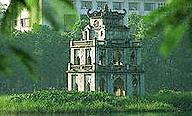
|
|
Ha Noi
|
|
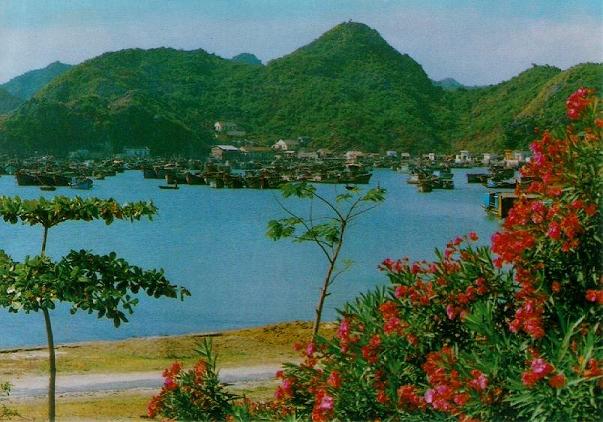
|
|
Cat ba Island
|
|
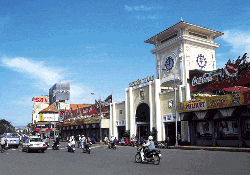
|
|
Ho Chi Minh City
|
|
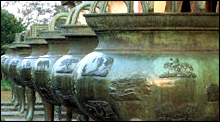
|
|
Hue
|
|
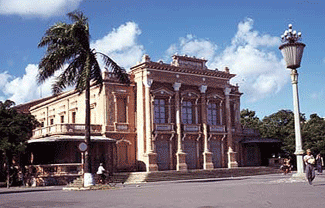
|
|
Hai Phong
|
|
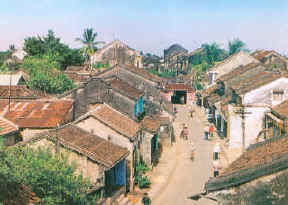
|
|
Hoi An
|
|
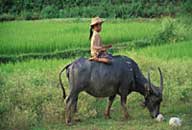
|
|
Northern Country Side
|
|
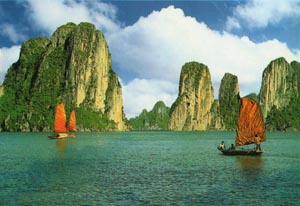
|
|
Ha Long Bay
|
| |
|
Tour Program:
Day 01: Hanoi (Dinner)
Today is the arrival day and a transfer will be provided from the airport to the hotel. There are no activities planned for today but this evening we will meet with our group leader and fellow travelers to discuss the outlines of the tour and also to answer any questions you may have. Following the group meeting, which usually takes one hour, we will have dinner at one of Hanoi's many fine restaurants.
Day 02: Hanoi, thousands years of culture (Breakfast/Lunch/Dinner)
This morning we drive to the Ho Chi Minh Complex, containing the mausoleum of the nations’ founder Ho Chi Minh. Here, large crowds gather to pay their respects to the man they simply call Uncle Ho as they silently file past his glass sarcophagus.
The complex also contains the One Pillar Pagoda, whose origins date back to the founding of the city in the 11th century. The pagoda, supported by a single stone pillar, is said to resemble a lotus blossom. The Presidential Palace and Uncle Ho's house on stilts can also be seen here. Ho Chi Minh was not comfortable with the idea of living in a Palace, and so had the more simple stilt house built for him.
We follow this with a walking tour of Hanoi's vibrant Old Quarter and Hoan Kiem Lake, the focal point of the city. Legend has it that in the 15th century Emperor Le Thai To vanquished the invading Chinese with the help of a magical sword. Whilst rowing on the lake an enormous turtle seized the sword from his grasp. The Emperor took this to mean that peace had returned and the sword had been given back to its guardian spirit. In honor of the event he renamed the lake ‘Ho Hoan Kiem’ - Lake of the Restored Sword. The Old Quarter with its bustling streets are home to hundreds of small thriving businesses, each street denoting its trade, such as Tin Street or Fish Street. We walk around the exciting Don Xuan covered market, the largest in Hanoi. Here you can buy anything from ghost money (usually fake $100 bills!) to imitation Rolex watches.
In the afternoon we visit the Temple of Literature, the site of Vietnam's oldest university, dating back to the 11th century. The temple is dedicated to one of the worlds most famous scholars, Confucius. Inside the temple grounds huge stone stele rest on the backs of even larger stone turtles (in Vietnamese culture the turtle represents longevity). The stele recorded the names of the successful candidates who would later go on to become mandarins in the Emperors court. From here we visit the impressive Museum of Ethnology, the finest museum in Vietnam. This museum is dedicated to Vietnam's 54 ethnic minorities, several of which we will see on our forthcoming trek.
Day 03: Mai Chau Trek - Home of an ethnic White Thai (Breakfast/Lunch/Dinner)
After breakfast we depart Hanoi for Hoa Binh province and the town of Mai Chau. This scenic drive takes around three hours. Along the way we pass fields of tapioca and sugar cane as well as rice paddies. After lunch in a traditional stilt house of the Thai people, we drive for one hour to Sa Linh Village to begin our trekking. The verdant and rugged mountain scenery combined with the colorful local population makes this an unforgettable experience. Today we walk along gravel tracks and small paths used by the locals. Our destination for this evening is Hang Kia village, home of the H’mong Minority people. Here we stay overnight as the guests of an Hmong family in a traditional long house, situated in a picturesque valley of peach orchards.
Day 04: Mai Chau Trek - Home of an ethnic White Thai (Breakfast/Lunch/Dinner)
Today, we get well and truly off the beaten track as we trek through tropical rain forest, using the local tracks and passing through cornfields as we descend in to Mai Chau Valley. Along the way we encounter the local villagers as they go about their daily business: whether it be tilling the fields, logging or herding buffalo. The trek usually takes around 7 hours and is quite steep in places. Lunch will be provided en route, and if weather permitting, we will have a picnic near a babbling brook at the foot of the valley. From here we pass through several White Thai villages, and are sure to attract attention as this part of the country receives very few visitors. We arrive at Van village by late afternoon and will have time to walk around this charming little village, enabling us to understand a little more about how the people live. The village is home to the Thai people, and tonight we will be their guests in one of their traditional stilt houses. There, we will be toasted as honored guests and will be able to sample some of their homemade rice wine.
Day 05: Mai Chau - Hai Phong (Breakfast)
This morning we trek for a couple of hours passing through several more Thai hamlets. We walk on the valley floor and are surrounded by rice paddies and beautiful scenery. At the small village of Khoe we meet up with our waiting vehicle and drive back towards Mai Chau. Lunch is again provided in Mai Chau and there is also the chance to do a little souvenir shopping before we continue on to Vietnam's busiest port and third largest city, Hai Phong.
Day 06: Hai Phong - Cat Ba Island, homeland of many Vietnamese 'boat people’ (Breakfast/Lunch/Dinner)
This morning we stroll around Hai Phong, well known for its beautiful French colonial architecture. On the way we visit the City Museum, Du Hang Pagoda and the Hang Kenh Tapestry Factory.
Then at 1 p.m. we board the local ferry to Cat Ba island, arriving at around 4:30 p.m. This gives us the perfect opportunity to meet some locals and even try out our Vietnamese! The rest of the day and evening are free. You may like to explore the nearby beaches or perhaps stretch your vocal chords in one of Cat Ba's many Karaoke bars in the evening.
Day 07: Ha Long Bay, Descending Dragon (Breakfast/Lunch)
Today we board our own private boat for a five-hour cruise around the secluded and majestic Halong Bay. Situated in the Gulf of Tonkin, Halong Bay covers an area in excess of 1,500 square km. Legend has it that a huge dragon fell to the earth, creating the natural wonder that is Halong Bay. Indeed Halong means 'descending dragon'.
This UNESCO listed world heritage site is the perfect place to unwind amidst the towering limestone karsts. The islands contained within the Bay are littered with beaches, grottoes and beautiful caves. One such cave was believed to have stored the wooden stakes that General Tran Hung Dao used to scupper the invading Mongol fleet in the 13th century. We have the chance to swim in the bay's emerald waters and also visit one of its many splendid caves.
Whilst on board our boat a wonderful seafood lunch will be served. There will be time for another swim after lunch, or if you prefer, you can simply laze around on deck and soak up the sunshine. In the afternoon we drive back to Hanoi. On the journey back to Hanoi we will stop at the Sao Do charity centre. This is a non-governmental organization run for disabled people. In the evening we board the famous Reunification Express for our southbound train to Hue.
Day 08: Hue (Vietnam’s Royal Past) (Breakfast/Dinner)
We arrive in Hue, Vietnam's former capital until 1945, in the afternoon and transfer to our hotel. There are many things to see in this city, regarded by many as the cultural centre of Vietnam. The Royal Tombs of the Nguyen Emperors on the outskirts of the city are easily accessible by bicycle. The Nguyen dynasty ruled Vietnam from 1802 until 1945 and several of its most prominent Emperors are buried in the surrounding countryside. One of the most impressive tombs, that of Emperor Ming Manh, is set within a beautiful landscaped garden. It is said that it took 13 years to find an appropriate burial site for the Emperor, and upon arrival it's not hard to see why they eventually chose this location. Set on the banks of the Perfume River and surrounded by beautiful rolling hills it is a tranquil and idyllic place.
Also not to be missed is the Citadel, containing the Imperial City and the Forbidden Purple City, the Emperor's private residence. Both were almost totally destroyed during the Tet Offensive of 1968, when the Communists took the city from the South and held it for 3 weeks. The battlements of the Citadel bear witness to the terrible fighting that went on within its walls and are riddled with shrapnel and bullet holes. Now thanks to UNESCO funding, much of the City is being faithfully restored to its former glory. The Imperial City, created in the 19th century and modeled on the Forbidden City in Beijing, has many palaces and temples inside. You enter through the impressive Ngo Mon Gate and continue on past the Emperor's throne room. One of the most interesting parts of the City is the ancestral Temple dedicated to the memory of the former Emperors. As with Vietnamese society in general, people believe that when you die you merely go to another world and therefore you must still be honored and looked after.
Another important site in Hue is the Thien Mu, or Heavenly Lady pagoda. Situated 4 km upstream on the banks of the Perfume River, it is an active Buddhist monastery with its origins dating back to 1601. One of the most poignant displays here is a car belonging to a former monk, Thich Quang Duc, who in 1963, drove to Saigon and set himself alight to protest against the South Vietnamese regime and its treatment of Buddhists.
Day 09: Hue - Hoi An, the charming Ancient Town (Breakfast).
Today we continue south by road to Hoi An. The scenery en route is beautiful as we hug the coastline of the South China Sea before winding our way up the spectacular Hai Van pass. Here we stop to admire the stunning views north, to Lang Co beach and south to Danang City. Once in Danang we will stop to visit the Cham Museum. It houses the most complete collection of Cham artifacts anywhere in the world. We continue on to Sandy Beach, where the American GI's used to have their R&R (Rest and Relaxation!) and the Marble Mountains, whose five peaks represent the five elements of the universe (water, wood, fire, metal and earth). The largest peak, Thuy Son contains a number of caves that have become Buddhist sanctuaries. The journey takes about 5 hours. In the afternoon we will have our first glimpse of Hoi An with a walking tour of the old quarter.
Day 10: Explore Hoi An, a UNESCO World Heritage Site (Breakfast)
Hoi An, formerly know as Faifo to early Western merchants is a charming, small town which can be easily explored on foot. Between the 17th and 19th centuries Hoi An was a thriving international trading port with a large Chinese and Japanese population. Then in the second half of the 19th century the harbor began to silt up and most of the town 's commercial interests moved to nearby Danang. More than any other place in Vietnam, Hoi An retains the feeling of centuries past and is a favorite with all travelers. You can spend your time walking around the historic town soaking up the atmosphere, exploring the many Chinese assembly halls and fascinating ancestral homes, some of which have been occupied by the same family for fifteen generations.
One of the most spectacular Assembly Halls is the Phuoc Kien Assembly Hall, built in 1690. The pagoda inside contains intricate statues and artwork, in part dedicated to Thien Hau Thanh Mau, the Goddess of the Sea and protector of fishermen. The unofficial emblem of the town is the Japanese Covered Bridge, which is over 400 years old. It is thought that it was constructed in order to link the two communities. The town is also famous for it's shops, in particular it's large number of tailors. If you wanted, you could have a whole new wardrobe made for you here! The riverside market is always a hive of activity, especially in the early morning when the day's catch arrives.
You might like to take a boat ride with one of the local women across the Thu Bon River. Perhaps you would like to hire a bicycle and head off on a scenic ride to Cua Dai beach, about 4 km away, stopping along the way at some of the neighboring villages. There's even the chance to improve your culinary skills with a Vietnamese cooking lesson! One thing is for sure - there is no shortage of things to do in this town!
Day 11: Nha Trang: Paradise Beach (Breakfast)
We arrive in Nha Trang in the early morning. Our time in Nha Trang is free for relaxing and soaking up the sun on the beautiful white sandy beaches and swimming in the crystal clear warm waters. We have the option to try some snorkeling or scuba diving or taking a boat trip to the nearby islands.
Day 12: Nha Trang - Saigon (Breakfast)
Free day in Nha Trang before boarding the overnight train to Saigon.
Day 13: Ho Chi Minh City and Cu Chi Tunnels (Breakfast/Lunch/Dinner)
Upon our arrival in Ho Chi Minh City, formerly known as Saigon, we transfer to our hotel. Ho Chi Minh City is the largest and busiest city in Vietnam with a population of 6 million people. Much of the daily life takes place on the streets, which are lined with shops, stalls and vendors with their wares spread out on the footpath.
Don't miss the bustling Ben Thanh Market - a fantastic place for bargains of every kind! There are several interesting sights in Saigon. The War Remnants Museum has a wealth of images from the wars, the most moving being a gallery entitled 'Requiem 'which is dedicated to Vietnamese and foreign journalists and photographers who perished during the French and American conflicts.
The Reunification Palace was the former residence of the President of South Vietnam until April 30th 1975 when the North Vietnamese tanks came crashing through the front gates, bringing the American War to a dramatic end. Close to the Palace some of the best examples of French colonial architecture are represented in the forms of Notre Dame Cathedral and the Central Post Office.
Notre Dame Cathedral was built between 1877 and 1883 and the stone used to create it was exported in its entirety from France. Next to the cathedral stands the Central Post Office, finished in 1891. It is another fine example of French architecture and is Vietnam's largest post office. For all its French colonial history though, Ho Chi Minh City is by far and away Vietnam's most modern city. It has numerous shopping malls, cinemas, discotheques and a bewildering number of bars.
In the afternoon we have an excursion to the famous Cu Chi tunnels. This network of tunnels, which stretched for over 200km, became legendary during the 1960's. The Cu Chi tunnels played a vital part in the American war in that they allowed the Viet Cong to control a large rural area only 30 to 40 km from Saigon. At its height, the tunnel system stretched from Saigon to the Cambodian border. The network, parts of which were several levels deep, included innumerable trap doors, specially constructed living areas, storage facilities, weapons factories, field hospitals, command centres and kitchens. Today the remaining tunnels have become a major tourist attraction giving the visitor a unique experience and feel of what underground life in the American War must have been like. The tunnels have been widened for our benefit (otherwise we would not be able to enter them.) For those interested there's even the opportunity to fire off rounds from an AK47 or MK16 at the nearby rifle range. Allegedly the old wooden targets resembled US Marines.
Day 14: Ho Chi Minh City - Cruising along the Mekong River (Breakfast/Lunch/Dinner)
This morning we travel by road to the small town of Cai Be in the heart of the Mekong Delta. From here we will board our boat and take a cruise around the tributaries of the mighty Mekong River.
On the way we visit some local cottage industries, including the puffed-rice and rice paper makers, bonsai nurseries and fish farms as well as exploring a floating market. Each boat usually sells one particular item, whether it be pumpkins, pineapples, sugar cane etc, and in order that the customer knows where to shop, they hang that item from the highest part of the boat. From here we head out into the Mekong River itself, a huge expanse of water. The Mekong River begins its life in Tibet and travels 4,500 km through six countries before eventually flowing into the South China Sea. Our lunch will be on the banks of one of the many canals that interlace the area, and will include the very tasty 'Elephant ear fish'. After lunch we continue to weave our way through the intricate network of canals. The canals carry everything from human cargo to huge rice barges and are the lifeblood of the Delta. Traveling by boat gives you a unique perspective of life here and later we can even navigate some of the narrower canals by small rowing boats. Tonight we will be the guests of a local family in the heart of Vinh Long in a home stay.
Day 15: Mekong Delta - Ho Chi Minh City (Lunch/Dinner)
After a leisurely breakfast we bid farewell to our charming hosts and take the boat to visit the cultural village near the town of Vinh Long. Here we can see brick kilns, tofu and ceramic tile manufacture and even a coffin-maker! From Vinh Long we transfer by road back to Ho Chi Minh City in the afternoon. We have a couple of free hours in HCM City before joining our tour leader for a farewell dinner tonight. Perhaps you could take a cyclo and explore Cholon, Saigon's china town. If so, be sure to check out the Binh Tay market; the largest market in Vietnam.
Day 16: Depart Ho Chi Minh City (Breakfast)
The tour finishes after breakfast. There will be a transfer waiting to take you to the airport for your departure flight. End of the tour.
|
|
16 days in Vietnam Tour - Travel Vietnam from Hanoi to Ho Chi Minh (Saigon)
|
|
Note:
|
|
Tour Prices(Price per person and in US$)
|
| Type |
Number of Travellers |
Internet Price |
|
|
|
|
Economy | 02 Pax |
1156 |
|
|
|
|
Economy | 03 - 05 Pax |
921 |
|
|
|
|
Economy | 06 - 10 Pax |
807 |
|
|
|
|
Economy | 11 - 15 Pax |
746 |
|
|
|
|
Economy | 16 - 20 Pax (01 FOC) |
734 |
|
|
|
|
Economy | 21 Pax up (01 FOC) |
707 |
|
|
|
|
Economy | Sgl. Surcharge |
250 |
|
|
|
|
First Class | 02 Pax |
1283 |
|
|
|
|
First Class | 03 - 05 Pax |
1049 |
|
|
|
|
First Class | 06 - 10 Pax |
942 |
|
|
|
|
First Class | 11 - 15 Pax |
860 |
|
|
|
|
First Class | 16 - 20 Pax (01 FOC) |
838 |
|
|
|
|
First Class | 21 Pax up (01 FOC) |
798 |
|
|
|
|
First Class | Sgl. Surcharge |
362 |
|
|
|
|
Luxury | 02 Pax |
1446 |
|
|
|
|
Luxury | 03 - 05 Pax |
1211 |
|
|
|
|
Luxury | 06 - 10 Pax |
1098 |
|
|
|
|
Luxury | 11 - 15 Pax |
1034 |
|
|
|
|
Luxury | 16 - 20 Pax (01 FOC) |
1001 |
|
|
|
|
Luxury | 21 Pax up (01 FOC) |
986 |
|
|
|
|
Luxury | Sgl. Surcharge |
483 |
| |

|
Vietnam Impressions Tour 16 days
|
|
Includes:
? A/C private car/ bus
? Train tickets as stated in program (First class)
? Boat to visit Halong bay, Hue, Nhatrang, Mekong delta
? Professional foreign language speaking guide (Please request your language tour guide)
? All admission cost to places mentioned in itinerary
? Travel insurances.
|
Excludes:
? Visa application fees
? Lunch on the first day
? International airfares and airport taxes
? Personal/ other expenses
? Drinks
? Single room
|
|
|
|
|
|
 Vietnam Tours
Vietnam Tours  Vietnam Highlights Tours
Vietnam Highlights Tours  Vietnam Impressions Tour 16 days
Vietnam Impressions Tour 16 days Vietnam Tours
Vietnam Tours  Vietnam Highlights Tours
Vietnam Highlights Tours  Vietnam Impressions Tour 16 days
Vietnam Impressions Tour 16 days